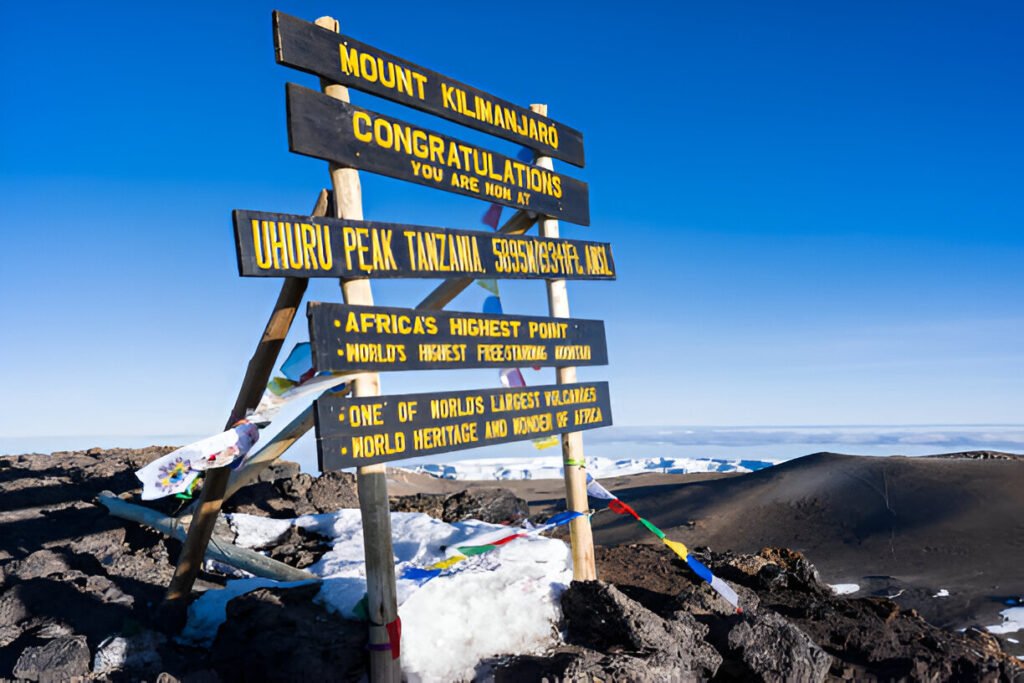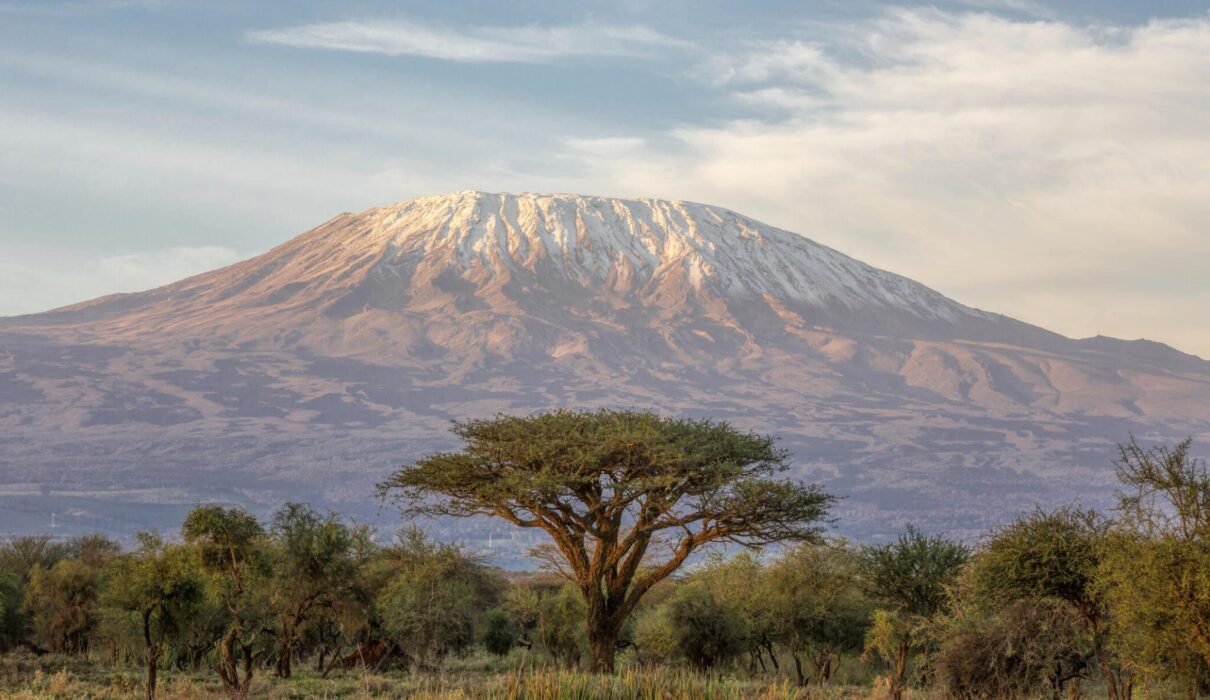What Happens to Your Body When You Climb Kilimanjaro : Altitude Effects & Acclimatization : Climbing Mount Kilimanjaro is a life-changing adventure, but it’s also a significant physical challenge. As you ascend to nearly 6,000 meters (19,341 feet), your body goes through a series of adjustments to cope with altitude, lower oxygen levels, and the demanding trek. Understanding how your body reacts to the changing conditions can help you prepare mentally and physically for the journey.
In this guide, we’ll explore what happens to your body when you climb Kilimanjaro, how to manage altitude sickness, and tips to ensure a successful summit.
Learn more about climbing Kilimanjaro and how to prepare for it

What Happens to Your Body When You Climb Kilimanjaro : Altitude Effects & Acclimatization : – Altitude: The Biggest Challenge
The most significant challenge when climbing Kilimanjaro is the altitude. As you ascend, the air pressure decreases, and there’s less oxygen available. At the summit, there’s only about 50% of the oxygen available at sea level. This lack of oxygen puts stress on your body, and it’s crucial to understand the impact of altitude on your physical health.
Effects of Altitude on the Body
- Breathing: You will find it harder to breathe as the air gets thinner, and your heart rate will increase to pump more oxygen to your muscles.
- Fatigue: The higher you climb, the quicker you will feel tired due to reduced oxygen levels.
- Altitude Sickness: Many climbers experience acute mountain sickness (AMS), which can cause headaches, nausea, dizziness, and shortness of breath.
Find out more about how altitude affects your body
What Happens to Your Body When You Climb Kilimanjaro : Symptoms of Altitude Sickness
Altitude sickness can affect anyone, regardless of fitness level. It usually sets in at around 2,500 meters (8,200 feet), but becomes a significant concern at higher altitudes. On Kilimanjaro, you’ll experience this as you approach camps like Barranco and Barafu at altitudes of over 4,000 meters.
Common Symptoms
- Mild Symptoms: Headaches, fatigue, dizziness, loss of appetite, and difficulty sleeping.
- Severe Symptoms: Severe headaches, vomiting, confusion, and a lack of coordination, which may indicate high-altitude pulmonary edema (HAPE) or high-altitude cerebral edema (HACE).
If left untreated, severe altitude sickness can be life-threatening. Immediate descent is the only cure.
Learn more about altitude sickness and how to prevent it.
What Happens to Your Body When You Climb Kilimanjaro : How Your Body Adapts to Altitude: Acclimatization
To avoid altitude sickness, it’s crucial to give your body time to acclimatize. Acclimatization is the process where your body adjusts to the reduced oxygen levels by increasing red blood cell production and improving oxygen delivery to tissues.
Tips for Proper Acclimatization
- Climb Slowly: Ascend gradually to allow your body time to adapt. The “pole pole” (slowly, slowly) approach is highly recommended on Kilimanjaro.
- Rest Days: Choose longer routes like the Lemosho or Machame Route, which offer better acclimatization through extra rest days.
- Hydration: Drink plenty of water (3-4 liters per day) to stay hydrated and aid acclimatization.
Learn about the best routes for acclimatization.
What Happens to Your Body When You Climb Kilimanjaro : Increased Heart Rate and Respiration
As your body struggles to adjust to the lower oxygen levels, your heart rate and breathing will increase to compensate. This is a natural reaction as your body tries to supply enough oxygen to your muscles and vital organs.
- Heart Rate: Your resting heart rate can increase significantly at higher altitudes. Don’t be surprised if your heart is beating faster even when you’re resting.
- Breathing Rate: Expect to breathe more rapidly, especially during physical exertion.
While this is a normal response, it can feel uncomfortable and tiring, especially as you approach higher altitudes.
Find out how to manage heart rate and respiration at altitude.
What Happens to Your Body When You Climb Kilimanjaro : Physical Fatigue and Muscle Strain
Kilimanjaro’s varied terrain includes steep slopes, rocky paths, and sometimes slippery conditions. The climb places considerable strain on your muscles, particularly your legs and back. You’ll also be hiking for 5-8 hours a day, which adds to the physical fatigue.
Effects on Your Body
- Muscle Strain: Your legs, especially your calves, hamstrings, and quadriceps, will feel the strain from constant uphill and downhill trekking.
- Joint Stress: Knees and ankles often experience stress, especially during descents on rocky terrain.
To reduce the risk of injury and strain, focus on training and strengthening your legs and core muscles before the climb.
Check out tips on physical preparation for Kilimanjaro.
What Happens to Your Body When You Climb Kilimanjaro : Weight Loss and Appetite Changes
At higher altitudes, many climbers experience a reduced appetite and, as a result, lose weight. This is due to the body burning more calories than usual as it works harder to perform basic functions like breathing.
- Calorie Burn: On average, climbers burn 4,000-6,000 calories per day on Kilimanjaro.
- Appetite Loss: Altitude can suppress your appetite, making it harder to consume the calories your body needs.
It’s important to eat regularly during the climb, even if you don’t feel hungry, to maintain your energy levels.
Learn how to maintain energy levels at altitude.
What Happens to Your Body When You Climb Kilimanjaro : Dehydration and the Importance of Hydration
Dehydration is a common problem at high altitudes because the dry mountain air causes more fluid loss through breathing and sweat. This can lead to faster fatigue, headaches, and dizziness.
How to Stay Hydrated
- Water Intake: Aim to drink 3-4 liters of water daily to keep your body hydrated.
- Electrolytes: Add electrolytes to your water to replace the minerals lost through sweat.
- Monitor Urine Color: A pale yellow color indicates proper hydration, while darker urine may signal dehydration.
Find out why hydration is critical at high altitudes.
What Happens to Your Body When You Climb Kilimanjaro : Sleep Difficulties at High Altitude
It’s common for climbers to experience sleep disturbances on Kilimanjaro due to the altitude. Insomnia, frequent waking, or shallow sleep can occur as your body adapts to the lower oxygen levels. Sleep quality often declines the higher you go, particularly above 3,500 meters (11,500 feet).
Tips for Better Sleep on Kilimanjaro
- Acclimatize Slowly: Take rest days to help your body adjust, which can improve sleep quality.
- Stay Warm: Cold temperatures at night can make sleep difficult. Make sure to bring a high-quality sleeping bag rated for sub-zero temperatures.
- Avoid Caffeine: Skip caffeine in the evening to improve sleep.
Discover tips for sleeping at high altitude.
What Happens to Your Body When You Climb Kilimanjaro : Mental and Emotional Challenges
Climbing Kilimanjaro is not just a physical test but also a mental challenge. The physical strain, altitude, cold temperatures, and long days can take a toll on your emotional resilience. Many climbers report feeling discouraged or overwhelmed during the summit push.
Overcoming Mental Fatigue
- Stay Positive: Keep a positive mindset and remind yourself of why you’re climbing. Mental preparation is just as important as physical training.
- Support from Guides: Local guides are experienced in motivating climbers and providing emotional support. Lean on them and your group for encouragement.
Learn about the mental preparation needed for Kilimanjaro.
10. Summit Success: The Final Push
The final push to Kilimanjaro’s summit, typically starting around midnight, is one of the most physically and mentally challenging parts of the climb. You’ll be battling fatigue, cold temperatures, and altitude sickness, but the reward of reaching Uhuru Peak is worth the effort.
- Summit Day: Expect to hike for 8-12 hours in total. The ascent is slow and grueling, but the sense of achievement upon reaching the top is unmatched.
- Emotional High: Reaching the summit can bring a powerful emotional release as you take in the incredible views and realize your achievement
Get detailed tips for a successful Kilimanjaro summit.

How Hard Is It to Climb Mount Kilimanjaro : Conclusion
Climbing Kilimanjaro pushes your body to its limits, but with proper preparation and understanding of how altitude and physical exertion affect you, the journey becomes more manageable. From the effects of altitude on your breathing and heart

